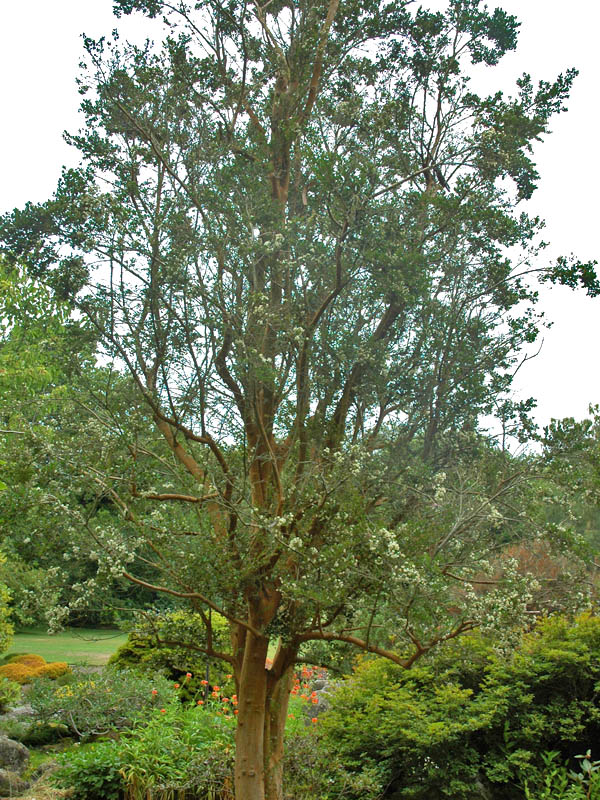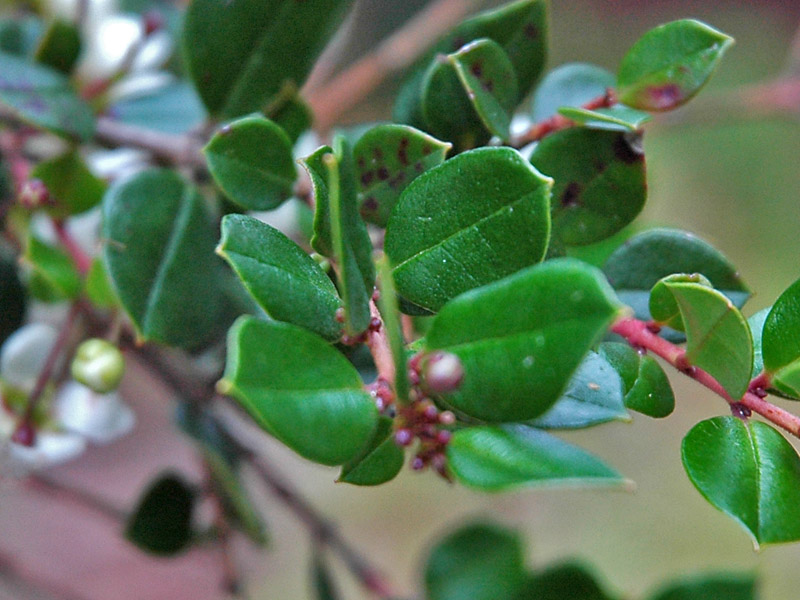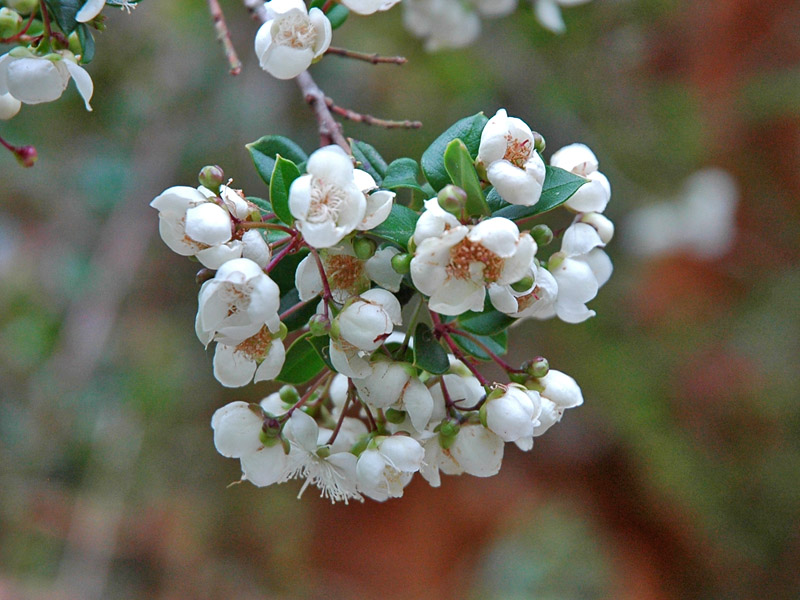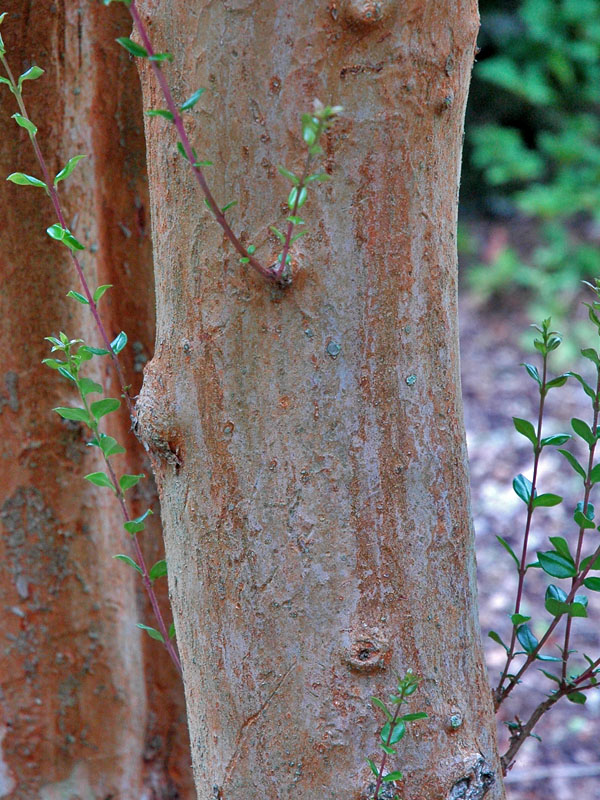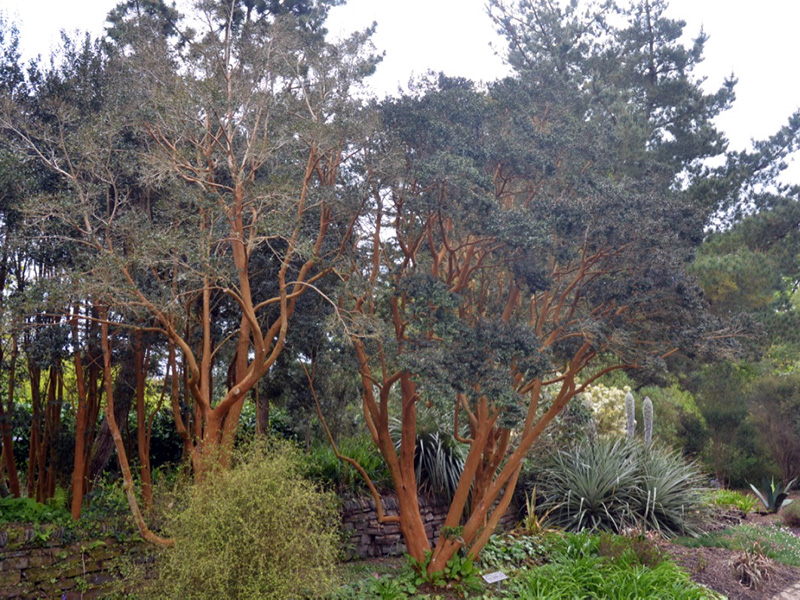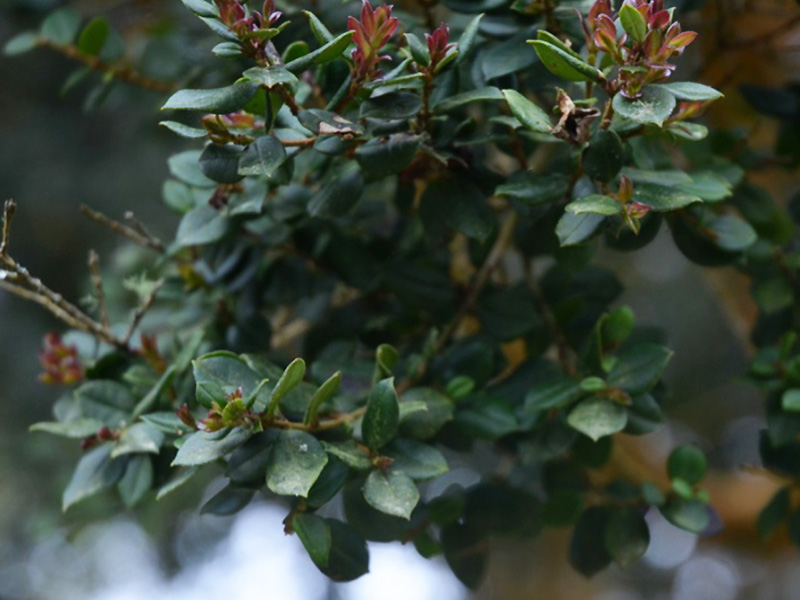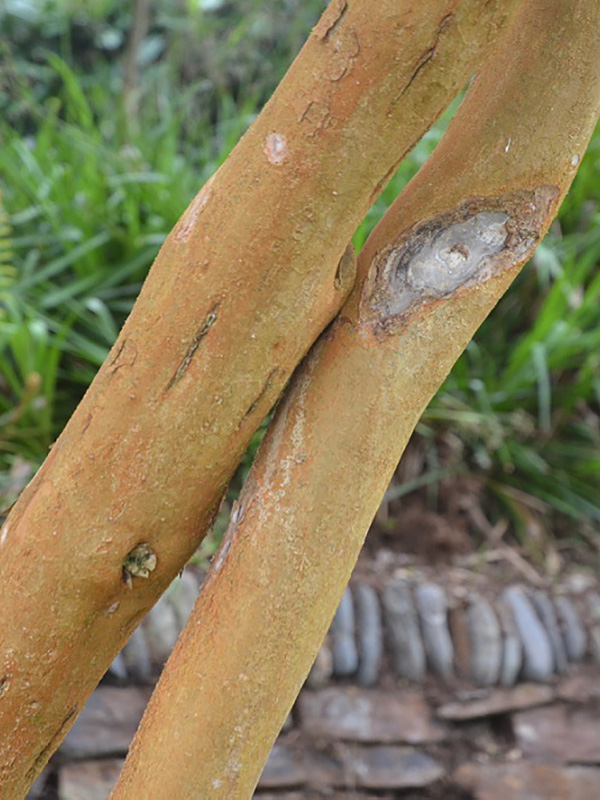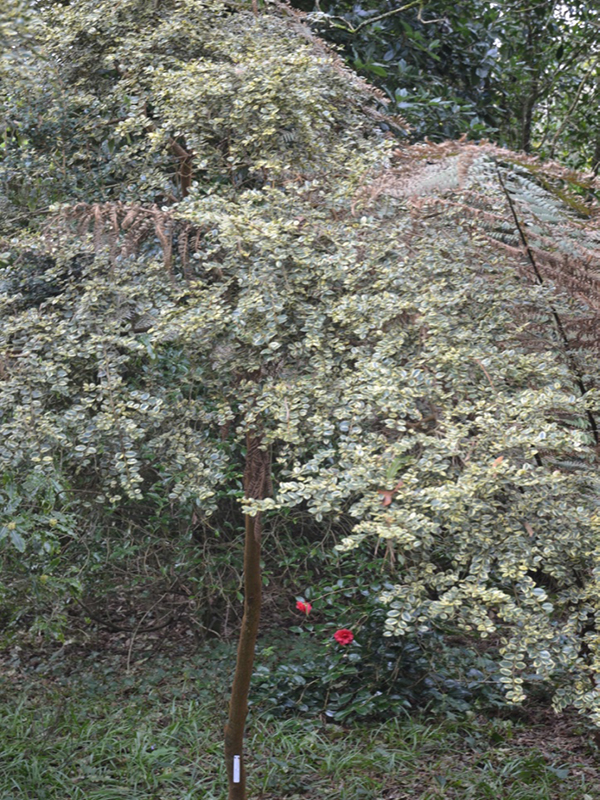
Tropicals, Woody > Luma > Luma apiculata > Luma apiculata
Luma apiculata
Chilean Myrtle
Origin: Introduced into cultivation through Veitch's Nursery near Exeter, Devon, England who enlisted the plant collector William Lobb (1809-1864) on one of his expeditions to Chile. Native to Chile, (Coquimbo, and Valdivia).
Mike's
Opinion


"
A tree planted for its stunning cinnamon-coloured bark, but can be only grown by those in the most moderate of temperate climates, such as my home county, Cornwall, England.
Michael Pascoe, NDP., ODH., CLT., MSc. (Plant Conservation)
"
| Family |
| Myrtaceae |
| Genus |
| Luma |
| Species |
| apiculata |
| Category |
| Tropicals, Woody |
| Type |
| Tree (evergreen) |
| Synonyms |
| Myrtus apiculata |
| Pronunciation |
| USDA Hardiness Zone |
| 8b - 9a |
| Canadian Hardiness Zone |
| 8a |
| RHS Hardiness Zone |
| H4 |
| Temperature (°C) |
| -9 - (-4) |
| Temperature (°F) |
| 15 - 25 |
| Height |
| 15 m |
Photographs
Description and Growing Information
Flowering Period
| Landscape |
| Smooth, cinnamon-coloured bark and an open airy crown topped by small evergreen leaves. |
| Cultivation |
| Although tolerant of full sun it prefers a protected location out of the wind with some moisture and shade. Trees that grow in partial shade tend to have a richer coloured bark than those in full sun. Plant in groups for the full effect of the rich coloured bark. |
| Growth |
| Slow |
| Pests |
| Usually problem free. |
| Bark/Stem Description |
| Smooth, cinnamon-coloured bark, peeling in patches to reveal a white subsurface. |
| Flower Description |
| Flowers profusely. |
| Fruit Description |
| Small, edible black-coloured fruit. |
| Texture Description |
| A fine textured tree. |
| Propagation |
| By semi-hardwood cuttings. |
| Ethnobotanical Uses (Disclaimer) |
| Edible fruit. |
